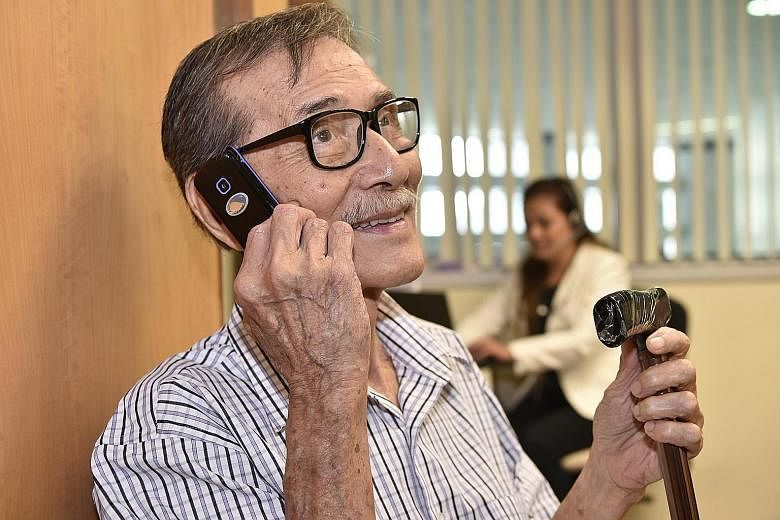Following surgery on June 2 to deal with a hip fracture, retiree Louis Lim received calls from staff at Changi General Hospital (CGH), where the procedure was done.
They were checking on him to make sure he was all right.
Mr Lim, who turns 79 next month, lives with his wife in Bedok and still has follow-up appointments at the hospital.
But the calls from the team of healthcare professionals at the hospital's Osteoporosis Liaison Service have touched Mr Lim, who fell off his bicycle on June 1.
"Telecare is more passionate... there is so much concern for you," said Mr Lim, who has received three calls since his surgery.
CGH started the remote service in December last year. The Osteoporosis Liaison Service team reaches out to osteoporosis patients such as Mr Lim to track their conditions, a few times a year.
The hospital also provides a similar service for patients with other conditions such as heart failure or diabetes. Such remote healthcare services are not unique to CGH.
The National University Health System (NUHS) plans to add to its existing services to monitor patients' medical conditions in their own homes later this year.
NUHS hopes to reduce patients' length of stay at the hospital as well as the number of outpatient visits.
SingHealth Polyclinics, whose polyclinics include ones in Queenstown and Bedok, is considering rolling out a new service to manage patients' health in their own homes as well.
Dr Linsey Gani, a consultant at CGH's endocrinology department, said that, through the Osteoporosis Liaison Service, the hospital is able to monitor surgical healing and treatment, among other areas.
Thishelps to prevent its osteoporosis patients from sustaining further fractures.
Public healthcare providers already offer a wide range of services to manage patients' health in their own homes.
In 2008, the National University Cancer Institute, Singapore launched a service that has its oncology nurses make follow-up phone calls to patients undergoing chemotherapy treatment. Again, the service aims to help reduce patients' visits to the hospital.
National Healthcare Group Polyclinics, whose polyclinics include those in Jurong and Woodlands, provides a Telecare Programme, which was launched in 2013.
Under this scheme, nurses trained in chronic disease management schedule telephone consultations with patients with illnesses such as diabetes and hypertension, who are in stable condition. The patients take vital sign readings for blood pressure and weight using their own equipment, and submit the readings through an online portal before the consultation, so the nurses can assess the data.
Through such programmes, face-to-face consultations even at the polyclinics are reduced.
Hospitals say they continue to leverage technology to better serve their patients.
On April 12 this year, six public healthcare institutions, including KK Women's and Children's Hospital and Singapore General Hospital, officially launched a national videoconferencing system, through which patients can have online medical consultations with healthcare professionals using their smartphones or computers.
The calls he receives reassures Mr Lim that he is being looked after.
"And that gives me so much confidence...that I know I can be well," he added.

